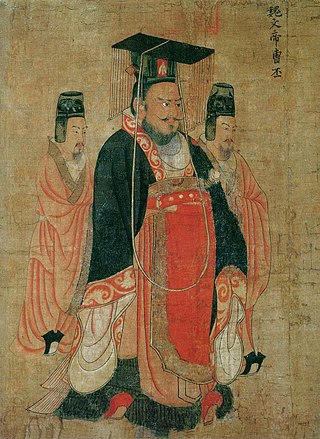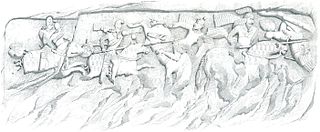AD 19 (XIX) was a common year starting on Sunday of the Julian calendar. At the time, it was known as the Year of the Consulship of Silanus and Balbus. The denomination AD 19 for this year has been used since the early medieval period, when the Anno Domini calendar era became the prevalent method in Europe for naming years.
The 200s decade ran from January 1, 200, to December 31, 209.

The 120s was a decade that ran from January 1, AD 120, to December 31, AD 129.
The 140s decade ran from January 1, 140, to December 31, 149.
The 160s decade ran from January 1, 160, to December 31, 169.
The 170s decade ran from January 1, 170, to December 31, 179.
The 190s decade ran from January 1, 190, to December 31, 199.
Year 105 (CV) was a common year starting on Wednesday of the Julian calendar. At the time, it was known as the Year of the Consulship of Candidus and Iulius. The denomination 105 for this year has been used since the early medieval period, when the Anno Domini calendar era became the prevalent method in Europe for naming years.
Year 140 (CXL) was a leap year starting on Thursday of the Julian calendar. At the time, it was known as the Year of the Consulship of Hadrianus and Caesar. The denomination 140 for this year has been used since the early medieval period, when the Anno Domini calendar era became the prevalent method in Europe for naming years.
Year 195 (CXCV) was a common year starting on Wednesday of the Julian calendar. At the time, it was known in Rome as the Year of the Consulship of Scrapula and Clemens. The denomination 195 for this year has been used since the early medieval period, when the Anno Domini calendar era became the prevalent method in Europe for naming years.
Year 166 (CLXVI) was a common year starting on Tuesday of the Julian calendar. At the time, it was known as the Year of the Consulship of Pudens and Pollio. The denomination 166 for this year has been used since the early medieval period, when the Anno Domini calendar era became the prevalent method in Europe for naming years.
Year 162 (CLXII) was a common year starting on Thursday of the Julian calendar. In the Roman Empire, it was known as the Year of the Consulship of Rusticusand Plautius.
Year 167 (CLXVII) was a common year starting on Wednesday of the Julian calendar. At the time, it was known as the Year of the Consulship of Aurelius and Quadratus. The denomination 167 for this year has been used since the early medieval period, when the Anno Domini calendar era became the prevalent method in Europe for naming years.
The 220s decade ran from January 1, 220, to December 31, 229.
Year 190 (CXC) was a common year starting on Thursday of the Julian calendar. At the time, it was known as the Year of the Consulship of Aurelius and Sura. The denomination 190 for this year has been used since the early medieval period, when the Anno Domini calendar era became the prevalent method in Europe for naming years.

Year 208 (CCVIII) was a leap year starting on Friday of the Julian calendar. At the time, it was known as the Year of the Consulship of Aurelius and Geta. The denomination 208 for this year has been used since the early medieval period, when the Anno Domini calendar era became the prevalent method in Europe for naming years.

Year 220 (CCXX) was a leap year starting on Saturday of the Julian calendar. At the time, it was known as the Year of the Consulship of Antonius and Eutychianus. The denomination 220 for this year has been used since the early medieval period, when the Anno Domini calendar era became the prevalent method in Europe for naming years.

Year 224 (CCXXIV) was a leap year starting on Thursday of the Julian calendar. At the time, it was known as the Year of the Consulship of Iulianus and Crispinus. The denomination 224 for this year has been used since the early medieval period, when the Anno Domini calendar era became the prevalent method in Europe for naming years.

Vologases IV was King of Kings of the Parthian Empire from 147 to 191. He was the son of Mithridates V. Vologases spent the early years of his reign re-asserting Parthian control over the Kingdom of Characene. From 161 to 166, he waged war against the Roman Empire; although initially successful, conquering Armenia and Syria, he was eventually pushed back, briefly losing control of the Parthian capitals of Seleucia and Ctesiphon to the Romans. The Romans suffered heavy losses from a plague erupting from Seleucia in 166, forcing them to withdraw. The war ended soon afterward, with Vologases losing most of northern Mesopotamia to the Romans. He died in 191 and was succeeded by his son Vologases V.

Gaius Julius Sohaemus was a Roman client king of Armenia.





